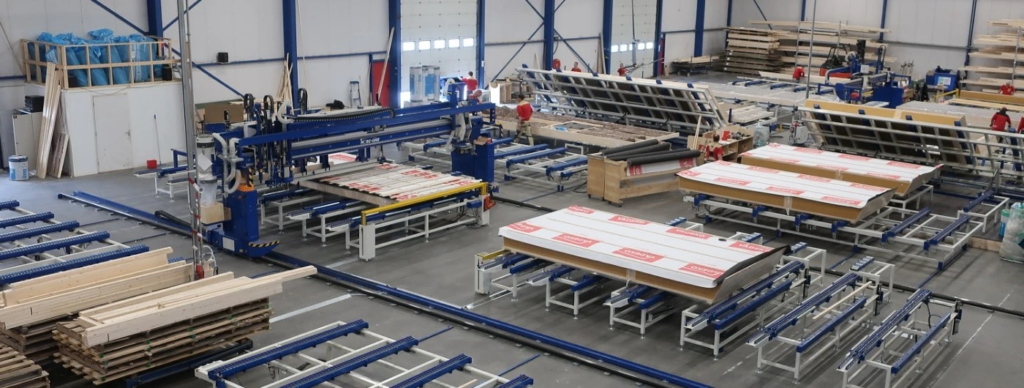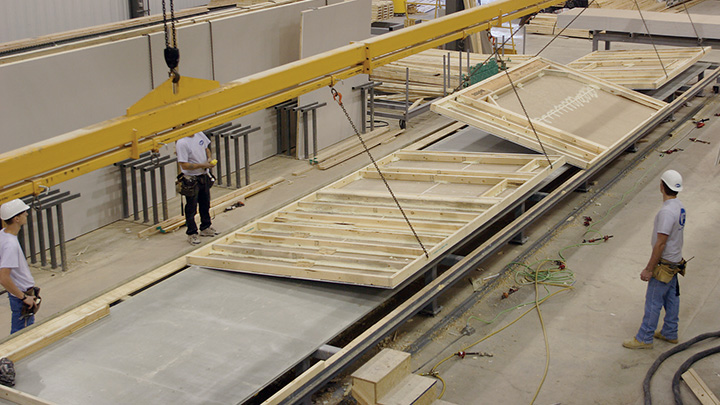The modular and offsite construction industry has long been celebrated for its efficiency, cost savings, and ability to streamline the building process. Yet, one area where many factories are falling behind is in the collection, analysis, and strategic use of data. As industries worldwide embrace data-driven decision-making, modular factories risk stagnation if they fail to leverage the wealth of information hidden within their daily operations. Are they missing out on the full potential of data mapping, or do they even understand what it could mean for their businesses?

All photos – Modular Building Automation Netherlands
NWhat is Data Mapping?
Data mapping is the process of visually representing information, often in real-time, to help organizations better understand, analyze, and optimize their operations. It involves taking raw data—collected from machines, workflows, materials, and employees—and organizing it into a structured format that highlights inefficiencies, patterns, and opportunities for improvement. In the context of modular construction, data mapping can take many forms, from digital twins that simulate production line efficiency to heatmaps that track material flow within a factory.

.
By integrating technologies like AI, IoT sensors, and advanced analytics, manufacturers can transform scattered data points into actionable insights, allowing them to make informed decisions that improve productivity, reduce costs, and enhance quality control. The key to successful data mapping lies in real-time analysis and the ability to visualize complex processes in a way that is easy to interpret and act upon.
The Reality of Data Collection in Modular Factories
Many offsite manufacturers track basic performance metrics—units per shift, material usage, defect rates—but the way they collect and use this data often remains rudimentary. Traditional factory management has typically relied on static reports, manual tracking, and gut instinct rather than dynamic, real-time data analysis. In contrast, industries like automotive manufacturing have been using detailed analytics and predictive modeling for decades to refine operations, reduce waste, and maximize efficiency.
The question then becomes: why is modular construction not as data-driven? Some factory owners cite high implementation costs as a barrier, while others express skepticism over the value of analytics. For many, data collection remains an afterthought, not an essential part of the production strategy. They may not realize that properly harnessed data doesn’t just provide insight—it can create an entirely new level of operational control and efficiency.
Beyond Spreadsheets: The Potential of Data Mapping
If modular and offsite manufacturers could see their production facilities through a digital lens, would they manage them differently? The concept of data mapping—where information is not only collected but also visually represented in real-time—could transform how factories operate. Imagine a digital twin of a facility where every movement of material, every delay, and every inefficiency is mapped out in a clear, actionable format.
For instance, manufacturers using RFID tags on materials and components could generate heatmaps of material flow, identifying areas where movement is inefficient. AI-powered predictive maintenance could track equipment usage and predict failures before they cause costly downtime. Workflow tracking software could pinpoint bottlenecks, allowing managers to optimize production schedules dynamically.
The technology already exists, but many offsite factories hesitate to implement it. Is it a lack of awareness, a reluctance to change, or simply an industry culture that resists disruption?
What Happens When Data Drives Decisions?
Some modular manufacturers have taken the plunge into data analytics and are reaping the benefits. Factories that have embraced automated tracking systems, digital scheduling platforms, and real-time data visualization report significant improvements in efficiency and cost reduction. AI-driven software is beginning to assist in forecasting demand, optimizing workforce deployment, and even refining modular designs based on historical performance data.
In a world where just-in-time manufacturing and supply chain precision are paramount, factories that refuse to harness the power of data risk being left behind. The modular industry has always prided itself on efficiency—why not take it to the next level by making data an integral part of daily operations?
The Road Ahead: Will Modular Manufacturers Adapt or Lag Behind?
The modular construction industry is at a crossroads. The adoption of advanced data mapping and analytics could usher in a new era of productivity and precision, but it requires a shift in mindset. Factory owners and managers must recognize that data is not just numbers on a screen—it is a strategic asset that can define the future of their business.
Will the industry embrace this opportunity, or will modular factories continue operating as they always have, missing out on the efficiencies that data-driven decision-making can provide? The answer may determine who leads the offsite construction revolution in the years to come.

Gary Fleisher
Gary Fleisher is the Leading Observer of the Offsite Housing Construction Industries. He has been actively involved in researching and writing about the latest trends and developments in the industry for over a decade now.
With his extensive knowledge and experience, Gary has emerged as a go-to expert for businesses looking to stay ahead of the curve in the modular construction industry. In addition to his work as an editor, he is also a sought-after speaker and consultant who has helped numerous companies achieve strategic and operational success.












